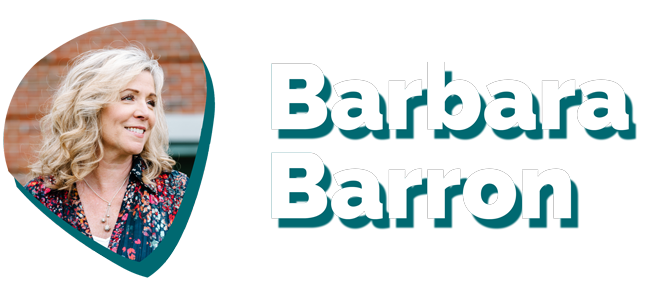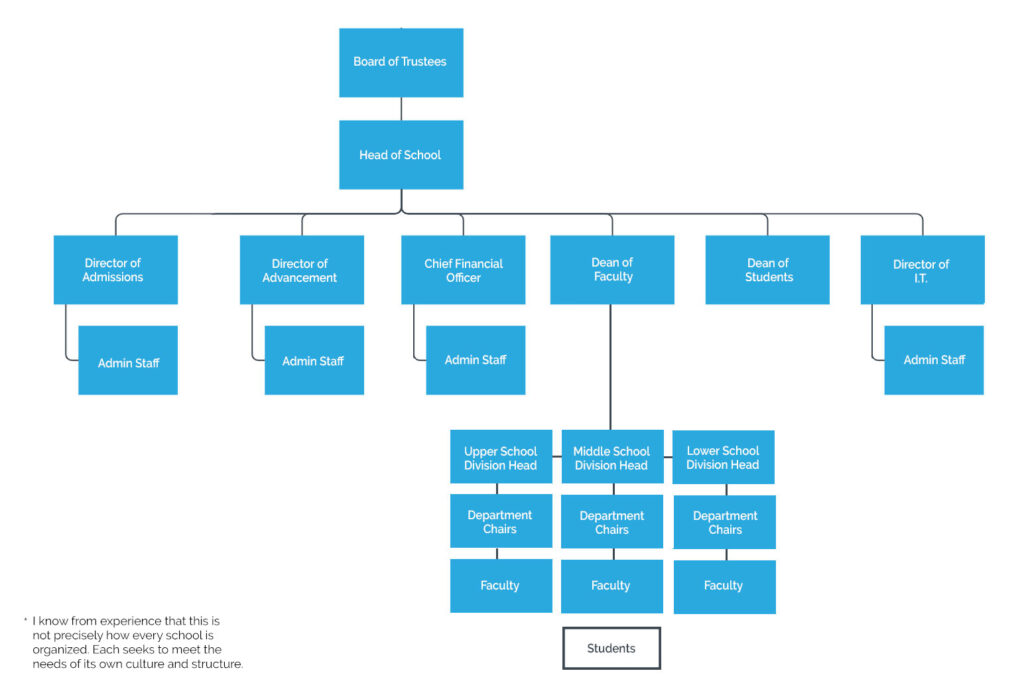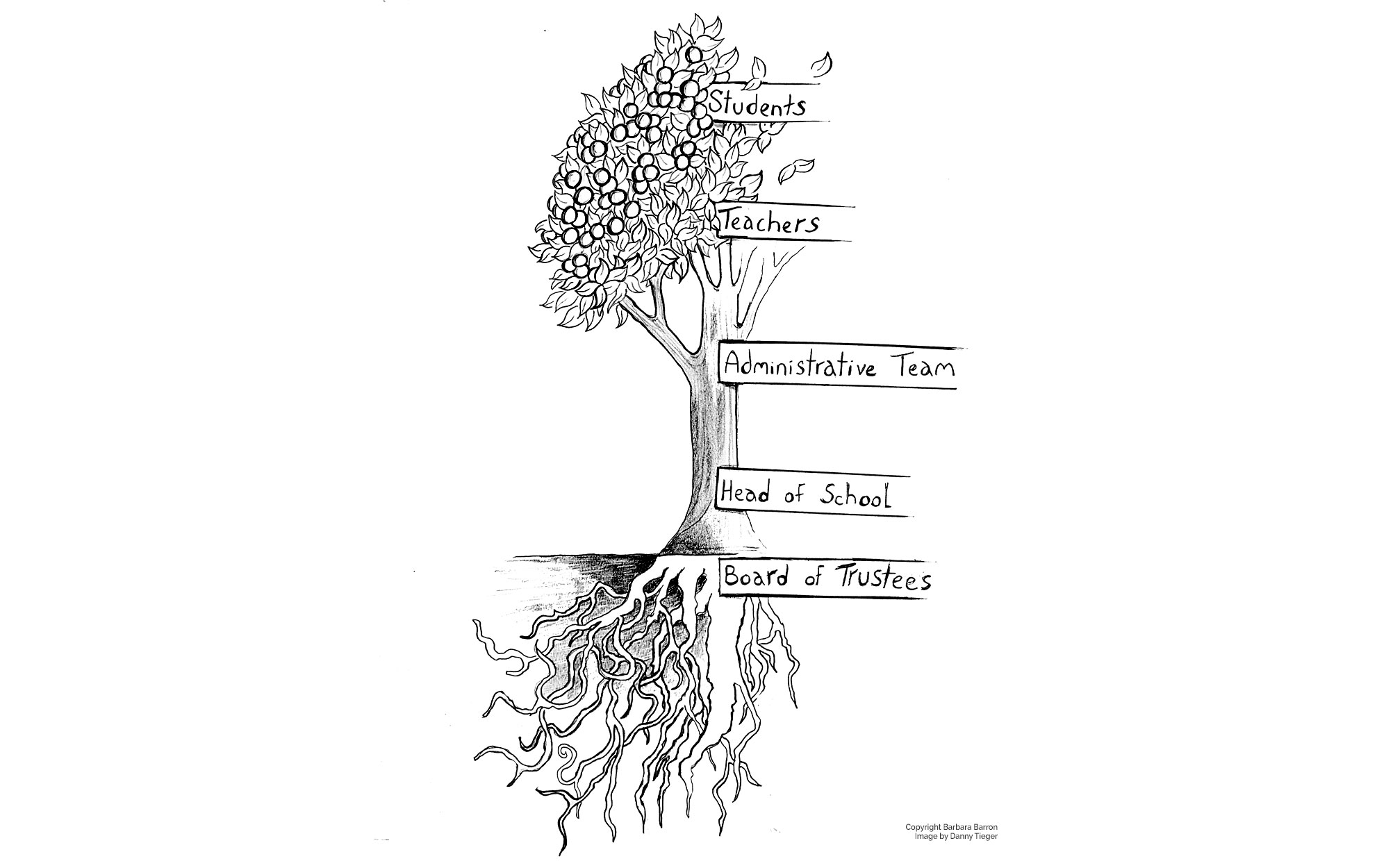by Barbara Barron | Posted March 13th, 2019
With huge gratitude to the brilliant mind of Gordon MacKenzie and re-reading his astonishingly smart and creative book “Orbiting the Giant Hairball”, I’ve been moved to write about our typical organizational charts and how we might think about them in a very different, and perhaps better, way.

Most schools operate within a pyramid structure to depict their orgs. Something like this, with the power, authority, and direction flowing downwards from the top:
The body tasked with setting the vision for the school into the next several generations of students is the Board of Trustees. They are also responsible for the essential work of supporting, supervising, occasionally selecting – or rarely, dismissing – the Head of School.
The Head of School oversees and manages everyone who works at the school, from the administrative team to the faculty. There are layers in here (division heads, deans, program directors, etc.) but it’s the classroom teachers that are near the bottom of this “classic” chart.
Let’s stop and reflect on that for a moment.
On any given day, at any given school, nothing gets done without the teachers. The teachers not only make learning possible, but they also make it come alive. They have the power and influence to spark or snuff out imagination and confidence. They oftentimes spend more time with their students than the students’ parents do. Their classrooms or labs or studios are where the magic happens.
Truly, no other group of staff at our school has more impact on whether our school delivers on its mission or doesn’t.
And it’s not just the school that is dependent on the teaching staff. Our job as Advancement Professionals is intrinsically linked to their performance.
When both teaching and learning are going well, and parents are delighted and, hopefully, grateful — that’s when we can step in and do the most important part of our jobs. It’s when only then that we have the honor, the privilege, to have conversations with parents about their philanthropy.
We’ve all had that experience where a donor family is unhappy. Their daughter was placed in a math class they didn’t think was the right fit. Their son has had a struggle with the science teacher. As a result, their gift goes away or is significantly reduced.
Now, we might argue that withholding their support is hardly helping us alleviate the problem. Rarely does less support make it easier to improve the math program! But since gifts remain voluntary and donors often use their money to make statements, that’s our life. We deal with it.
Have you subscribed to the newsletter yet? It only takes a minute.
My point is: it’s only when things are going well in the classroom that things are possible for us in advancement.
And yet, the teachers are at the bottom of the standard “org chart.” In Gordon’s illustration, which I’ve included here, he speaks for those at the bottom thusly: “Let us out from under this crushing mountain!”
I couldn’t agree more.
So what if we flipped the script? Or in this case, created a totally different image? Let’s substitute the pyramid with a Plum Tree.
Much nicer, isn’t it?
Here we have the Board of Trustees as the roots. They are ultimately responsible for the stability of the organization by tending to its fiscal health.
Next is the Head of School as the trunk. The Head of School is the enduring, central support. He or she must be strong, steady, and – most importantly – upright.
Up and out from the Head of School is our administrative leadership team. They are the branches that support the “product producers”. In a strong Plum Tree ecosystem, the branches are both intertwined and interdependent.
And now we find the teachers. They are the leaves and the stems that nurture the flowering crop. They are in closest proximity to and are therefore directly responsible for, the plums. And, as if it isn’t painfully obvious by now, the students are, of course, the plums.
Gordon goes on to offer voices from the different parts of the tree to bring it to life:
The roots (the board) asks: “What resources do you need to produce the best crop?”
The trunk (the Head) asks: “What do you need to motivate you?”
The branches (division heads) say: “We’ve got what you need – air and sunshine!”
The leaves and stems (teachers) say: “On a clear day, we can see forever!”
A tree, Gordon asserts, is a living organism. A pyramid is a tomb. Ouch.
Altogether, an impossibly lovely image. But what might this re-envisioning mean practically for our schools, and for us in advancement?
It means that our boards would remain squarely focused on growth, the securing of resources, and creating stability from which the tree can grow and thrive. Instead of seeing themselves as the “bosses”, they adopt a service-oriented mindset. They, like the rest of us, seek to serve the needs of those above them.
It means that our Heads provide that enduring support, and seek only to remain steady – lest the branches above begin to shake. They handle the administrative logistics. They mentor faculty. All their resources are pushed up to meet the programmatic needs of the school. With the help of the board’s resources, they provide our teachers, our product producers, the nourishment they need to do their best work.
It means our teachers, who are the source of our success stories, would be less stressed, more independent, feel more respected, and — this is key for us — be far more likely to stay where they are. That’s crucial, my friends. Because without leaves on our tree, we’re living in a permanent winter.
So what might this actually look like?
Let’s use this as an example: the opening week teacher meetings.
Have you subscribed to the newsletter yet? It only takes a minute.
This week is designed using the more conventional model – the one we’re trying to replace. This is management from the top-down. From the general to the specific. The many serve the needs of the few. We typically start these meetings on Monday with one big meeting. All the adults in the school come in for a group session. Perhaps there’s a keynote speaker, a presentation or an exercise. And – because bonding is important to us – we add a happy hour or similar at the end of the day.
What are our teachers, especially the newer ones, thinking? “Could I please just get some time in my classroom?!”
The next day (or days) we break into smaller groups, either by grade or division. Better. But most teachers are still anxious about everything they need to do to be ready for the first day of class. It isn’t until Thursday or even Friday that our teachers are free to spend a chunk of time in their classrooms, getting them and their own hearts and minds prepared to start the year.
Now, what if we flipped it? Just like we did our org chart?
Let’s make Monday a classroom prep day. All day. On Tuesday or Wednesday, we start to meet in larger groups, by grade, division, or by discipline. We end the week with the big group session, the speaker, the exercise. And the happy hour.
Our teachers might be far happier, don’tcha think!?
At the end of the day, the choice is yours: our school can be a tomb, or it can be a tree. And what do you lose in the process of turning things upside down? Nothing. At most, you’ll have only a moment of momentary confusion. And then you’ll start to see the benefits, almost immediately.
Teachers will thank you for providing a way for their “bosses” to see their value. And frankly, I’d love to tell that story to our supporters.
After all, who in good conscience could argue with an organizational chart that prioritizes teachers and students at the top?
I’d like to see them try.

My name is Barbara Barron, and I’m writing this blog to share advice on a profession that I adore.
I’ve been working in the field of Independent School Advancement for over 20 years. In that time, I’ve had the pleasure of creating and implementing successful Strategic Fundraising Plans for so many incredible schools. I’ve had the privilege of seeing real growth at The Carey School, Marin Primary & Middle School, Woodside Priory, Crystal Springs, Sage Ridge and others. (Maybe we’ve met!)
Nothing makes me happier than seeing a struggling school start to thrive. My hope is that you’re here to make a positive change as well. I hope my advice can be a part of that change.
Shoot me an e-mail if you want to swap tips, or share your voice here.
Let’s do this, together.




